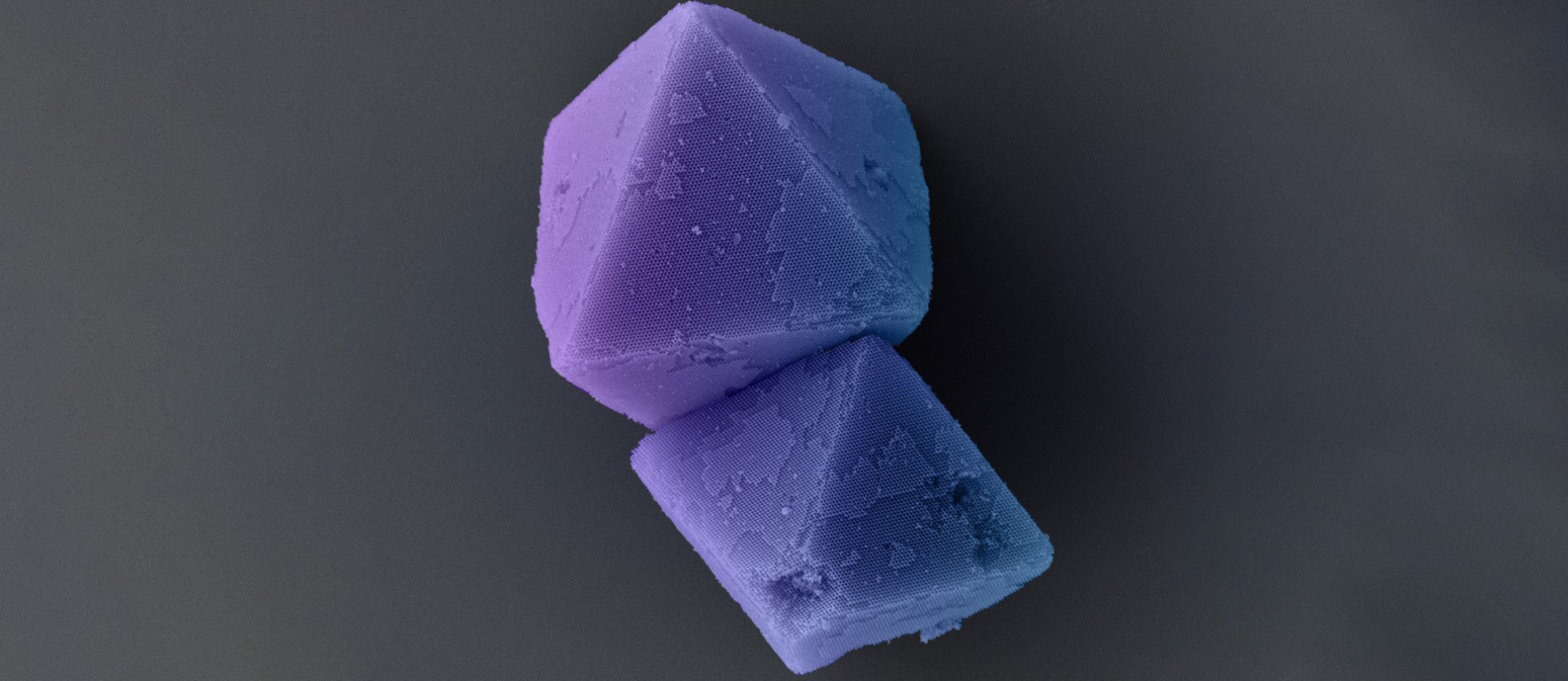
Origami with DNA crystals

The fact that butterfly wings shimmer in intense colors is by no means due to color pigments. It is photonic crystals that are responsible for the play of colors. Their periodic nanostructure allows light of certain wavelengths to pass through while reflecting other wavelengths. This is how the transparent wing scales appear so radiantly colorful.
What nature seems to have mastered with ease is not quite so trivial in technological terms. The production of an artificial photonic crystal for wavelengths of visible light has been a major challenge since its theoretical prediction more than 35 years ago. The reason: "Photonic crystals offer a wide range of applications. They could be used to develop more efficient solar cells, innovative light guides or materials for quantum communication. But so far, they have been very difficult to produce," explains Dr. Gregor Posnjak. The physicist is a postdoctoral researcher in LMU Professor Tim Liedl's research group, which is funded by the Cluster of Excellence e - conversion. His team uses DNA nanotechnology to develop new approaches for the production of photonic crystals.
In contrast to lithography processes, the nanotechnologists use a technique called DNA origami to design and connect building blocks. These then join together to form a specific lattice. "It is known that a diamond lattice theoretically has an optimal geometry for photonic crystals. In a diamond, each carbon atom is connected to four other carbon atoms. Our challenge was to enlarge the structure of a diamond crystal by a factor of 500 so that the distances between the building blocks are comparable to the wavelength of light," explains Tim Liedl. "We increased the periodicity of the lattice to 170 nanometers by replacing the individual atoms with larger building blocks using DNA origami," adds Posnjak.

Dr. Gregor Posnjak at work in the laboratory.
This is a specialty of the research group: it is one of the world's leading teams in the field of DNA origami. The scientists use a long, ring-shaped DNA strand (consisting of around 8,000 bases) and a set of 200 short DNA staples. The latter control the folding of the longer DNA strand into almost any shape, comparable to origami masters folding pieces of paper into complicated objects. "We can therefore use the clamps to control how the DNA origami objects combine to form the desired diamond lattice," says Posnjak. The DNA origami building blocks form crystals about ten micrometers in size, which are deposited on a substrate and taken over by a cooperating research group at the Walter Schottky Institute of the Technical University of Munich: Professor Ian Sharp's team is able to deposit single atomic layers of titanium dioxide on all surfaces of the DNA origami crystals. "The DNA origami diamond lattice serves as a scaffold for titanium dioxide, which determines the photonic properties of the lattice due to its high refractive index. After coating, our photonic crystal does not allow UV light with a wavelength of around 300 nanometers to pass through, but reflects it," explains Posnjak. The wavelength of the reflected light can be controlled via the thickness of the titanium dioxide layer.
Although conventional lithography processes are suitable for photonic crystals that function in the infrared range, they are complex and expensive. In the wavelength range of visible and UV light, lithography processes have not yet been successful. "This is why the comparatively simple production process using the self-organization of DNA origami in an aqueous solution offers a good opportunity to produce structures of the desired size cost-effectively and in larger quantities," says Prof. Tim Liedl. He is convinced that the unique structure with its large pores, which can be chemically addressed, will trigger further research impulses. For example, in the field of energy generation and storage.
Original publication:
Gregor Posnjak, Xin Yin, Paul Butler, Oliver Bienek, Mihir Dass, Seungwoo Lee, Ian D. Sharp, Tim Liedl
Diamond lattice photonic crystals assembled from DNA origami.
Science 2024
doi.org/10.1126/science.adl2733









